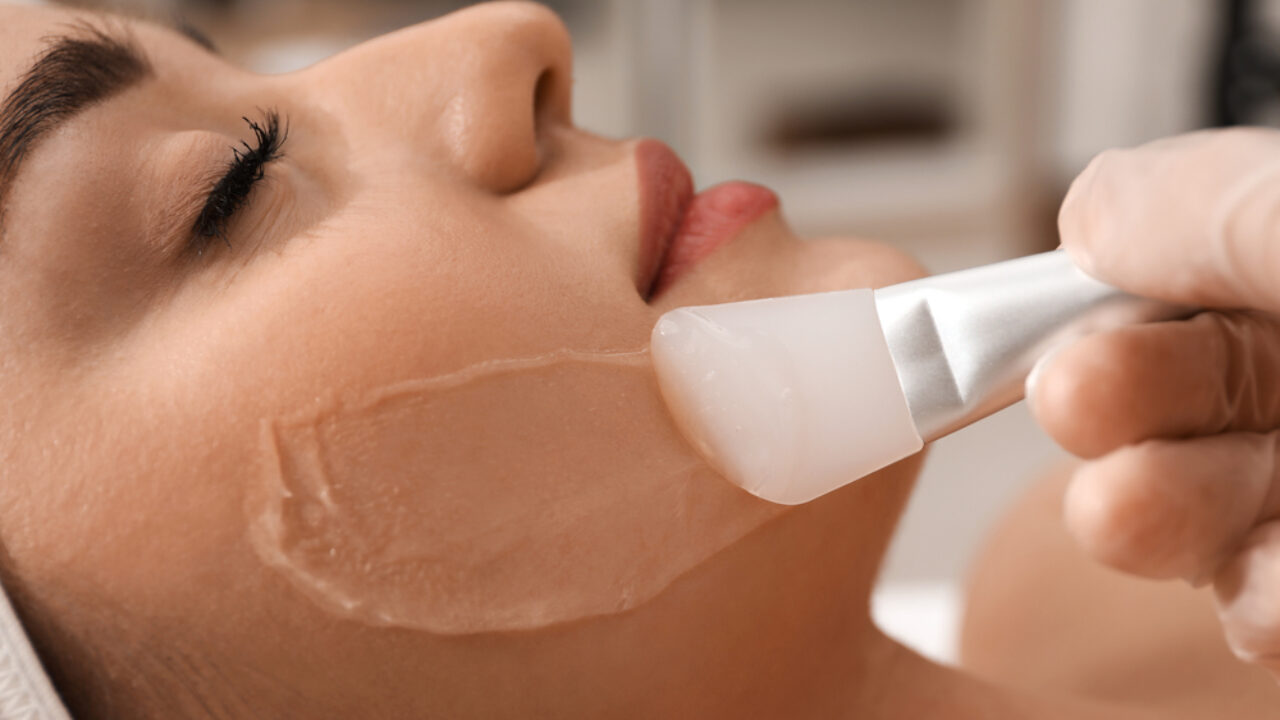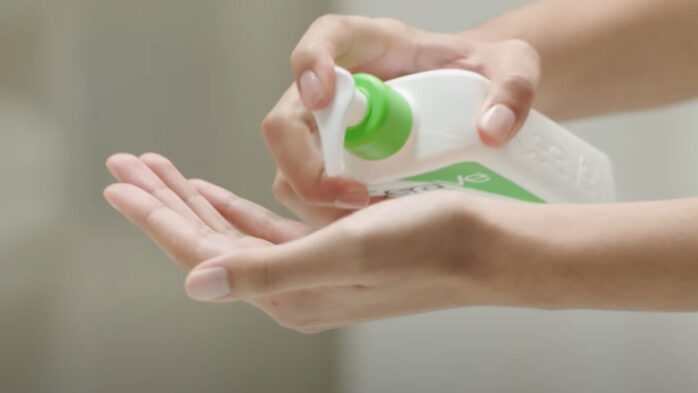
Skin cycling promises to clear breakouts, soothe irritation and give you the skin of your life. Discover the best skin cycling routine whether you’re a beginner or a skincare pro
JUMP TO SECTION
Click the links below to jump to the relevant section:
There’s another beauty trend that’s risen to fame from TikTok and this time it’s called ‘skin cycling’ – and with 3.5 billion views for #SkinCycling, it’s clearly resonating with viewers.
A large part of this is because it’s a trend that has also been praised by both dermatologists and skincare experts for its effectiveness.
The skin cycling routine has risen to fame because of videos from New York dermatologist Dr. Whitney Bowe.
Her skincare videos have amassed millions of views, with her, ‘skin cycling for beginners’ video having been watched 2.5 million times alone (and counting). Many of her other skin cycling videos have similar viewing figures.
Being an award-winning dermatologist and published research scientist, Dr. Whitney Bowe posts videos based on her medical knowledge, research, and testing and therefore the technique she coined, ‘skin cycling’ is definitely one not to overlook.
So what is skin cycling, does skin cycling work for every skin type and is skin cycling easy to do?
FURTHER READING: Skin gritting: The Reddit skincare trend on the rise again | Slugging skincare: What is skin and hair slugging?
Skin cycling is a nighttime skincare routine that follows a pattern of treatment over a block of nights. These blocks include ‘rest’ and ‘recovery’ days.
With skin cycling, instead of using the same skincare products and active ingredients every day, you only use certain products on particular nights and then repeat the pattern.
Skin cycling essentially streamlines your skincare routine and product use, so it’s less complicated yet still very effective.
 Shutterstock/mamabella
Shutterstock/mamabella Skin cycling is a great option to try if you suffer from breakouts, irritation, or red blotches because it may be the cocktail of skincare ingredients, or overuse of active ingredients that are causing the problem.
A lot of skincare products individually work well to improve your skin. However, without realising it, you may be using ingredients across different products that don’t play so nicely.
By giving your skin a break in between using active ingredients, you’re preventing your skin barrier from being compromised.
With skin cycling, you’re also using your skincare products in a strategic way that means they complement each other.
FURTHER READING: Skincare ingredient checker: Get to grips with what’s in your skincare with our ingredients guide
If you’re looking for an easy way to get into skin cycling, this four-day skin cycling routine is a good place to start.
 Victoria Woollaston-Webber | mamabella
Victoria Woollaston-Webber | mamabella Start your skin cycling routine with a blank canvas by remove any makeup and product residue. You can use any cleanser to do this but the more gentle, the better to avoid causing irritation.
Skin cycling queen Dr. Whitney Bowe recommends using an exfoliating serum or masque to get rid of dead skin cells. This is in place of a physical exfoliator or gritty scrub.
She also says you should be looking for the ABPs of exfoliating acids because they’ll be gentler on your skin barrier:
We recommend the Skin Perfecting 8% AHA Gel Exfoliant from Paula’s Choice for A, The Ordinary’s AHA 30% + BHA 2% Peeling Solution for B, and LIXIRSKIN Night Switch Essential Lipids for P.
You don’t have to use all three, but choosing one of these will give you the desired exfoliation.
After applying your exfoliating product, allow it to soak in for two-three minutes – or as recommended – and then apply your moisturiser on top.
Note: Using chemical exfoliants makes your skin more sensitive to the sun, so make sure to wear SPF and limit sun exposure to your face.
 Shutterstock
Shutterstock On night two, cleanse your skin and pat it dry so that your skin’s no longer wet.
Add a pea-sized amount of your chosen retinol to your hand and dab it in places over your face. You’ll want another pea-sized amount for your neck, followed by two pea-sized amounts for your chest area. Rub in the dots of your retinol and then apply your moisturiser on top.
If you’re just starting out with retinol you may want to put your moisturiser on your skin first, so apply that first after cleansing.
We also recommend you read our beginner’s guide to retinol and use a low concentration at first, or introduce it gradually.
FURTHER READING: What is retinol and what does retinol do for your skin?
After an intense work out you’re encouraged to rest your muscles and skin cycling works in the same way.
After two nights of treatments and using active ingredients, you’re going to want to give your skin a night off by only cleansing and moisturising before bed. This way you’ll be hydrating your skin, repairing your skin barrier, and rebalancing your skin’s microbiome (the natural bacteria on your skin).
On your recovery night, we also recommend that you use a moisturiser that absorbs well into your skin and doesn’t just sit on top. Therefore your skin cycling moisturiser for recovery night should include ceramides, squalene, hyaluronic acid, prebiotics, or post-biotics. Check out our best moisturiser list for recommendations.
“The third and fourth night of skin cycling is what differentiates this routine from other skincare routines,” says a skincare advisor from The Inkey List. “It’s completely intentional that for night three and night four, no actives are implemented into your skincare routine.
“These two nights are meant to serve as a recovery period for your skin to allow maximum benefits with actives while also preventing the potential risk of damage and irritation. In short, exfoliants are completely off the table these nights.”
For a basic skin cycling routine, repeat the pattern starting on night five.
 CeraVe
CeraVe If you’ve been skin cycling for over a month and it’s been going well, you may want to increase the potency of your skin cycling routine.
For example, on your retinoid night you can stop using your moisturiser under your retinoid and instead apply it directly to your dry skin. That way you’re getting a more powerful dose.
Another way to advance your skin cycling is to drop one of your recovery nights.
An example of an advanced skin cycling routine would be:
If after trialing this your skin is reacting well, without irritation, you could then add an extra retinoid night. Therefore your advanced skin cycling routine would be exfoliation, retinol, retinol, recovery.
Like with most beauty regimes there are different options and tweaks to techniques that work better for particular skin types.
Combining lots of active ingredients and using lots of different skin products can cause skin irritation.
The routine of skin cycling means your skin barrier has a chance to repair and the skin microbiome rebalances, meaning you’re far less likely to irritate your skin.
If you have sensitive skin you may wish to drop the retinol night and instead add another recovery night, so you limit irritating products even further.
FURTHER READING: The best skincare for sensitive skin – and what to avoid when buying moisturisers and more
 Getty Images/iStockphoto
Getty Images/iStockphoto Skin cycling works particularly well for oily or acne-prone skin because regularly exfoliating and not overusing active ingredients can help prevent acne breakouts.
If you’re already using retinol every night and your skin is responding well, you may see fewer benefits if you start skin cycling.
Reducing the number of active ingredients you’re using may well mean they have less of a positive impact than you’re used to.
Dr. Whitney Bowe says that skin cycling results show really quickly. After two cycles, any blotchiness or sensitivity should improve.
This means your skin should have a healthier glow after about a week of sticking to the skin cycling routine.
Skin cycling should also leave your skin feeling softer and more hydrated.

Kat is a freelance journalist, photographer, and the founder of Simply Gender Free – a company dedicated to smashing gender stereotypes in kids’ products. As a mum of two, Kat is passionate about making the world a better place for the next generation
